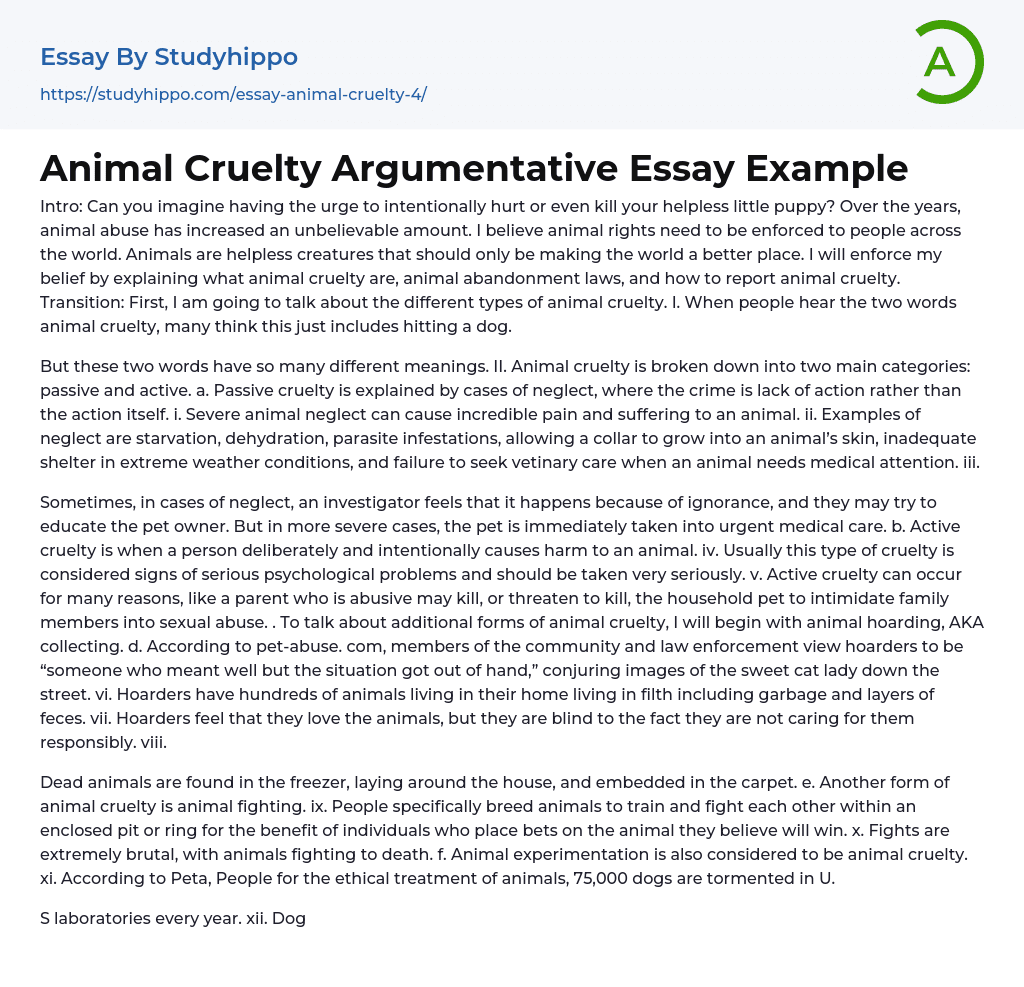Animal cruelty remains a pervasive issue, and its ramifications resonate deeply within our society. Writing a thesis statement on this essential subject requires a cogent understanding of its complexities. This guide will elucidate how to construct an effective thesis statement regarding animal cruelty while adhering to a polished argumentative structure.
The thesis statement is the fulcrum upon which your entire argument pivots. It encapsulates your principal assertion, providing clarity and direction in your discourse. When formulating a thesis statement regarding animal cruelty, it is crucial to observe the multifaceted nature of the issue. Underground realities, coupled with public ignorance, breed atrocities against animals. Thus, your thesis should not simply reflect a moral stance but also encapsulate the underlying sociocultural and psychological depths that perpetuate such behaviors.
To begin, it is pivotal to delineate the scope of animal cruelty—what it encompasses, and the various forms it may take. Animal cruelty can manifest through neglect, physical abuse, and the inhumane treatment of animals in industries such as entertainment, research, and agriculture. The sheer diversity of its manifestations speaks to a broader societal paradox: while humans often regard animals as companions, we simultaneously subject them to harrowing treatment. Establishing this dichotomy in your thesis can offer a compelling starting point for your argument.
Next, a compelling thesis statement will often hinge on elucidating a specific observation or trend observed in the realm of animal cruelty. For instance, one might note the increasing prevalence of reported cases of neglect in domestic environments or the alarming rise in the use of animals for experimentation in various industries. Highlighting such trends can lend legitimacy to your thesis by grounding your argument in observable phenomena.
Moreover, it is indispensable to address the root causes of animal cruelty. This involves delving into socioeconomic factors, cultural attitudes toward animals, and the psychological profiles of those who perpetrate such acts. For example, are there regions where poverty correlates with increased animal mistreatment? Or does a particular cultural narrative foster a desensitization to animal suffering? By weaving these observations into your thesis, you transform a simple statement into a multidimensional analysis that prompts critical thinking.
Your thesis should also invoke a call to action or suggest consequences that arise from ignoring the problem of animal cruelty. A robust thesis might assert that widespread apathy towards animal welfare not only endangers animal populations but also reflects a societal malaise that could portend graver implications for humanity. This kind of connection deepens the significance of your argument, as it encourages readers to reconsider their perceptions and potential complicities in the cycle of cruelty.
In constructing your thesis, consider employing an argumentative strategy that appeals to both logos and pathos. Logic can be forged through the presentation of statistics—such as the number of animals affected each year or the financial implications of various industries on animal welfare—while pathos engages the audience’s emotions. Employing vivid descriptions of the suffering endured by animals can catalyze sympathy and galvanize action. The juxtaposition of cold, hard facts with emotionally charged narratives creates a compelling thesis that can resonate on multiple levels.
Finally, an effective thesis statement should remain concise yet comprehensive, typically confined to one or two sentences. This succinctness ensures that your principal argument is readily accessible to your audience. It should invite discussion, inspire curiosity, and provoke inquiry into the labyrinthine issues surrounding animal cruelty. A well-constructed thesis might read: “The rise in reported cases of animal cruelty signifies not only a failure in societal compassion but also highlights critical socioeconomic factors that perpetuate this indefensible behavior.” Such statements are powerful. They encapsulate the argument while bridging observable facts with deeper philosophical inquiries.
Once your thesis statement is established, the subsequent paragraphs of your paper should expand upon the thematic elements introduced. Each paragraph can delve into different aspects of the overarching theme, supported by credible evidence, anecdotes, or case studies. As you develop your argument, ensure that your points are interconnected and support the initial thesis consistently. Transitioning smoothly between ideas will fortify your overall argument, creating a cohesive narrative that persuades the reader.
In conclusion, crafting an effective thesis statement on animal cruelty necessitates a nuanced understanding of the issue at hand. By articulating a clear, observant, and deeply reasoned thesis, writers can advance the discourse surrounding animal welfare and perhaps even inspire transformative change in societal attitudes. By embracing the layered complexities of animal cruelty, we can forge a path toward greater understanding and compassion for those who cannot speak for themselves.





